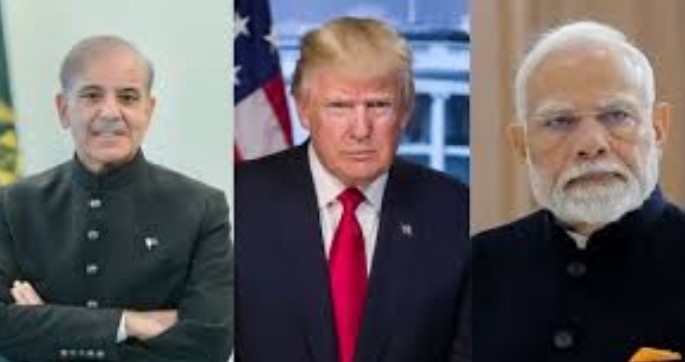Trump’s Bold Statement on Kashmir’s Future
Former U.S. President Donald Trump recently addressed the India-Pakistan conflict over Kashmir, stating that he would work with both nations to find a lasting solution—though he jokingly remarked that it may take “a thousand years” to resolve.
The statement comes after a fragile ceasefire agreement was reached following intensified military clashes, drone strikes, and cross-border shelling. Trump emphasized that the United States played a role in facilitating the ceasefire, signaling an ongoing interest in South Asian geopolitics.
This article examines Trump’s position on Kashmir, past U.S. involvement, and the complexities of negotiating a resolution.
Kashmir: A Longstanding Diplomatic Challenge
A Region Marked by Conflict
- The Kashmir dispute originated in 1947, when British India was partitioned into India and Pakistan.
- Wars, insurgencies, and border clashes have defined the region’s history, with no lasting resolution.
- International mediations, including past U.S. interventions, have failed to produce permanent peace.
Why Is Kashmir Important to Global Politics?
- Strategic location—Kashmir borders India, Pakistan, and China, making it a crucial security concern.
- Nuclear risks—Both India and Pakistan possess nuclear weapons, making military escalations dangerous.
- Terrorism concerns—Insurgency and cross-border tensions contribute to regional instability.
A peaceful resolution to Kashmir would ease global security concerns, but decades of failed negotiations highlight the difficulty in achieving lasting peace.
Trump’s Past Statements & U.S. Kashmir Policy
Trump’s Offer to Mediate Kashmir
- In 2019, Trump publicly stated he was willing to mediate between India and Pakistan over Kashmir.
- India rejected U.S. involvement, asserting that Kashmir is a bilateral issue.
- Pakistan welcomed mediation, citing concerns over human rights violations and military clashes in the region.
The U.S. Role in the Ceasefire Process
- Recent ceasefire agreements were facilitated by diplomatic pressure from the United States, China, and the United Nations.
- The U.S. has historically maintained ties with both India and Pakistan, balancing security interests.
- Economic and military partnerships with both nations make it unlikely that the U.S. would take a firm stance favoring one side.
Trump’s statement about working toward a solution suggests continued U.S. interest in South Asian stability, but the realities of political tensions make diplomatic interventions complex.
Challenges to Finding a Kashmir Solution
Political Resistance & National Interests
- India views Kashmir as an internal matter, opposing outside mediation.
- Pakistan continues to push for international involvement, citing its claim over the region.
- China’s growing influence in South Asia adds complexity, especially concerning border disputes in Ladakh.
The Role of Insurgency & Military Conflicts
- Cross-border tensions and terrorist activities keep the conflict active.
- Drone warfare and modern military strategies have changed how India and Pakistan engage.
- Humanitarian concerns remain critical, with civilians enduring ongoing violence and displacement.
A lasting solution requires mutual agreement, global cooperation, and significant political changes, making diplomatic resolutions extremely difficult.
Bottom-Line: Can Kashmir Find Peace?
Trump’s remark that a Kashmir solution may take “a thousand years” underscores the complexity and depth of the conflict. While the U.S. continues to advocate de-escalation, past efforts show that external mediation has limitations, particularly when national interests overshadow diplomatic resolutions.
For Kashmir, the fight continues, and while peace remains a distant hope, political will and regional cooperation will be essential for any progress.



